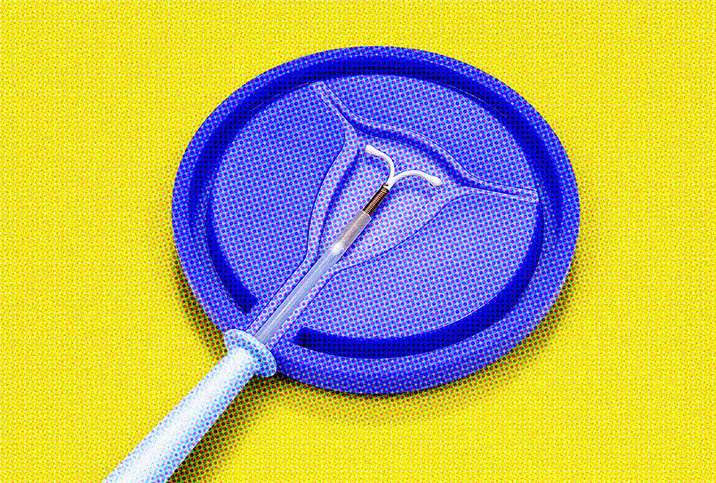Doctor's Note: Your Long-Acting Reversible Contraception Options

If you are of reproductive age, sexually active and have a uterus, you may be in need of reliable contraception. Depending on your plans for the future, you might want to have children soon, not for several years or perhaps not at all.
It's important—now more than ever as abortion restrictions proliferate—that you are aware of your options for contraception so you can choose the right one for yourself.
Long-acting reversible contraception (LARC) methods, as the name suggests, are meant for long-term use but are not permanent methods of birth control. They are some of the most effective contraceptive options available because they do not rely on daily use and, therefore, are not subject to user failure, such as forgetting to take your pill, which is something that happens to the best of us but can lead to breakthrough bleeding and unintended pregnancy.
Your LARC choices
Two types of LARC are available to patients in the United States: the intrauterine device (IUD), which comes in hormonal and nonhormonal options, and the birth control implant.
Copper IUD
The copper IUD is a hormone-free, T-shaped device that is placed into the uterine cavity during a routine office visit. The placement usually takes only a few minutes, but it can be uncomfortable. Most patients do well if they pretreat with ibuprofen and have realistic expectations about the procedure.
An IUD prevents sperm from fertilizing an egg by making it difficult for the sperm to move and function normally. An IUD does not cause an abortion, as it does not disrupt an existing pregnancy.
The copper IUD is effective for up to 10 years and can be removed earlier if desired. The failure rate is very low at 0.8 percent. The most commonly reported side effect of the copper IUD is slightly heavier periods.
Progesterone IUD
Progesterone IUDs are available in a variety of types and sizes. They are also T-shaped and placed during a routine office visit.
The progesterone IUD works in the same way the copper IUD does, making it difficult for sperm to move and function normally. However, the progesterone does so by specifically increasing and thickening cervical mucus. Once again, the IUD does not disrupt existing pregnancy, so it is not an abortifacient.
Progesterone IUDs secrete a small amount of daily progesterone, which acts on the uterine tissue. The amount of progesterone that makes it into the bloodstream is very low, but side effects are reported in some patients. Most commonly, these are irregular spotting or breakthrough bleeding due to the effect of the progesterone on the uterine lining.
Additional side effects can include headaches, breast tenderness and, in rare cases, acne. These IUDs are good for three to seven years of use, but like the copper IUD, can be removed early if pregnancy is desired sooner.
Complications for both types of IUDs are rare and include a failure rate of 0.8 percent, falling out of approximately 5 percent of patients during the first year, and perforation of the uterus during placement in about 0.1 percent of cases.
Overall, the IUD is a highly effective form of birth control that you can "set and forget" until it is time to have it replaced or you are ready to start a family. Fertility resumes immediately, as soon as the IUD is removed.
The birth control implant
The birth control implant is a rod roughly the size of a toothpick made of medical-grade plastic impregnated with progesterone. It is implanted just underneath the surface of the skin and releases a small amount of progesterone daily.
The implant works by preventing ovulation and also thickens cervical mucus to interfere with sperm movement. It is good for up to three years of use and is placed and removed in the office. The implant is the most effective reversible birth control that exists, with a failure rate of 0.05 percent.
Common side effects of the implant include changes in menstrual patterns, with irregular spotting or light bleeding. Users may also notice lighter or absent periods. Some patients report gastrointestinal side effects and headaches, but the device is typically well tolerated. Fertility resumes immediately upon the removal of the implant.
Who is a candidate for LARC?
The great news about LARC methods is that most patients are able to use them. Teenagers are particularly good candidates because they often have trouble remembering to take a daily pill, and these methods are highly effective for years.
An IUD can be placed immediately after childbirth, miscarriage or abortion, or anytime during a woman's cycle. An IUD should not be placed if there is undiagnosed abnormal bleeding or an active cervical infection.
If you are interested in getting a long-acting form of reversible contraception, reach out to your healthcare provider or OB-GYN today.


















